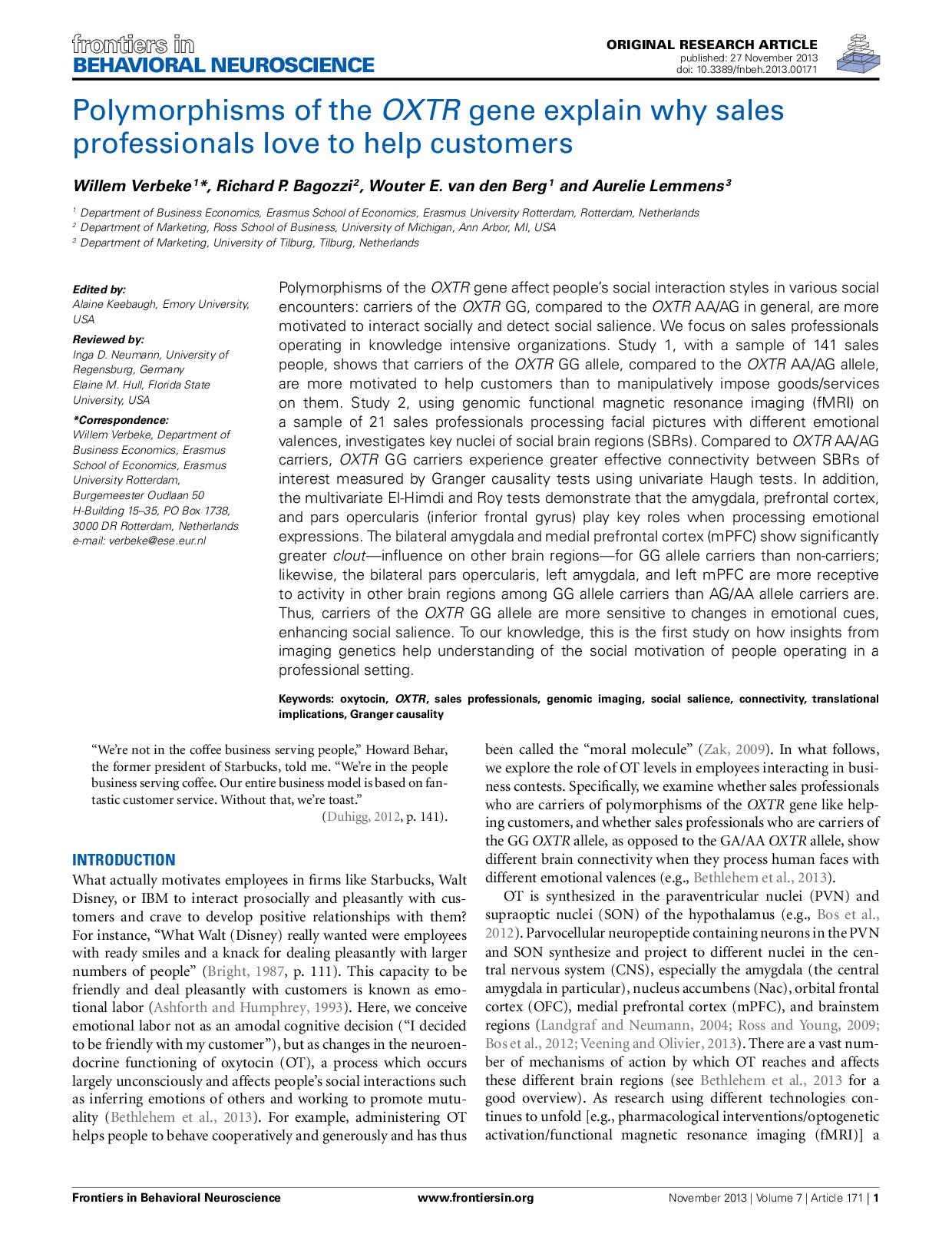Polymorphisms of the OXTR Gene to Explain Why Sales Professionals Love to Help Customers
Polymorphisms of the OXTR gene affect people’s social interaction styles in various social encounters: carriers of the OXTR GG, compared to the OXTRAA/AG in general, are more motivated to interact socially and detect social salience. We focus on sales professionals operating in knowledge intensive organizations. Study 1, with a sample of 141 sales people, shows that carriers of the OXTR GG allele, compared to the OXTR AA/AG allele, are more motivated to help customers than to manipulatively impose goods/services on them. Study 2, using genomic functional magnetic resonance imaging (fMRI) on a sample of 21 sales professionals processing facial pictures with different emotional valences, investigates key nuclei of social brain regions (SBRs). Compared to OXTRAA/AG carriers, OXTR GG carriers experience greater effective connectivity between SBRs of interest measured by Granger causality tests using univariate Haugh tests. In addition, the multivariate El-Himdi and Roy tests demonstrate that the amygdala, prefrontal cortex, and pars opercularis (inferior frontal gyrus) play key roles when processing emotional expressions. The bilateral amygdala and medial prefrontal cortex (mPFC) show significantly greater clout—influence on other brain regions—for GG allele carriers than non-carriers; likewise, the bilateral pars opercularis, left amygdala, and left mPFC are more receptive to activity in other brain regions among GG allele carriers than AG/AA allele carriers are. Thus, carriers of the OXTR GG allele are more sensitive to changes in emotional cues, enhancing social salience. To our knowledge, this is the first study on how insights from imaging genetics help understanding of the social motivation of people operating in a professional setting.

